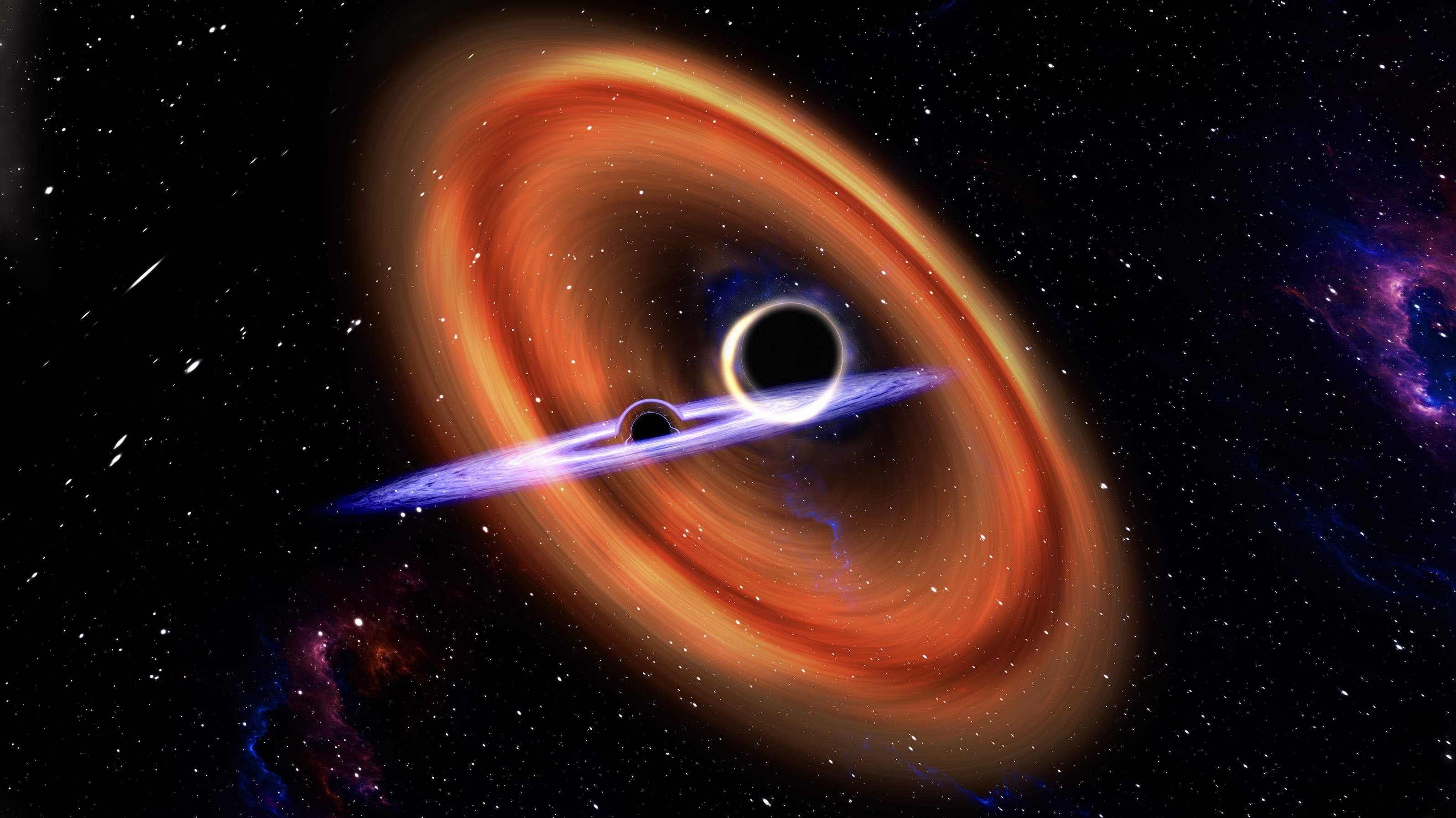The mergers, measured one month apart in 2024 by LIGO-Virgo-KAGRA collaboration, advance scientific understanding of the nature of black hole formation and fundamental physics.
A pair of distant cosmic black hole mergers, measured just one month apart in late 2024, is improving how scientists understand the nature and evolution of the most violent deep-space collisions in our Universe. Data collected from the mergers also validates, with unprecedented accuracy, fundamental laws of physics that were predicted more than 100 years ago by Albert Einstein and furthers the search for new and still unknown elementary particles with the potential to extract energy from black holes.
The first merger detected, GW241011, occurred roughly 700 million light years away and resulted from the collision of two black holes weighing in at around 20 and 6 times the mass of the Sun. The larger of the black holes in GW241011 was measured to be one of the fastest rotating black holes observed to date. The second merger, GW241110, happened around 2.4 billion light years away and involved black holes roughly 17 and 8 times the mass of the Sun. While most observed black holes spin in the same direction as their orbit, the primary black hole of GW241110 was noted to be spinning in a direction opposite its orbit – a first of its kind.
Interestingly, both detected mergers point toward the possibility of “second-generation” black holes. “GW241011 and GW241110 are among the most novel events among the several hundred that the LIGO-Virgo-KAGRA network has observed,” says Stephen Fairhurst, professor at Cardiff University and spokesperson of the LIGO Scientific Collaboration. “With both events having one black hole which is both significantly more massive than the other and rapidly spinning, they provide tantalizing evidence that these black holes were formed from previous black hole mergers.” This process, called a hierarchical merger, suggests that these systems were formed in dense environments, in regions like star clusters, where black holes are more likely to run into each other and merge again and again.
“These two binary black hole mergers offer us some of the most exciting insights yet about the earlier lives of black holes,” said Thomas Callister, co-author and assistant professor at Williams College. ”They teach us that some black holes exist not just as isolated partners but likely as members of a dense and dynamic crowd. Moving forward, the hope is that these events and other observations will teach us more and more about the astrophysical environments that host these crowds.”
The precision with which GW241011 was measured also allowed key predictions of Einstein’s theory of general relativity to be tested under extreme conditions. The research team found excellent agreement with Kerr’s solution and verified Einstein’s prediction with unprecedented accuracy. The discovery had also yet another application – in particle physics. The observation that the massive black hole in the binary system that emitted GW241011 continues to rotate rapidly even millions or billions of years after it formed rules out a wide range of masses of ultralight bosons predicted by some extensions of the Standard Model of particle physics.
For more details read the full news release, the GW241011 & GW241110 detection page, and the scientific paper published in The Astrophysical Journal Letters.

